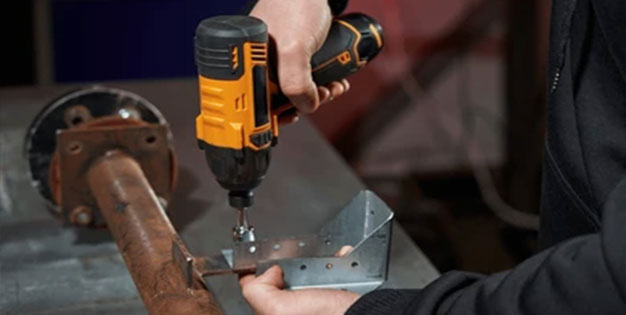
Hand and power tools are
essential in construction, each serving unique purposes. Hand tools, such as
hammers, screwdrivers, and wrenches, are manually operated, while power tools,
including drills, saws, and sanders, rely on electrical power.
Both types possess
distinct advantages and drawbacks. Hand tools offer versatility, affordability,
and ease of maintenance, suitable for a broad range of tasks. Conversely, power
tools provide greater strength, ideal for heavy-duty work.
The choice between hand
and power tools largely depends on the task's complexity. Hand tools suffice
for simpler jobs, whereas power tools excel in more intricate tasks.
These tools play a
pivotal role in any workspace, streamlining work, ensuring precision, and
reducing potential injuries. Hand tools enable tasks that would otherwise be
challenging, like screw insertion, nail driving, or wood cutting. In contrast,
power tools expedite tasks through electrical or battery-driven mechanisms,
effortlessly boring holes in various materials.
Hand tools, manually
operated without power, are smaller, lighter, and more economical but may be
slower and labor-intensive. Conversely, power tools, driven by motors or
batteries, are quicker and more potent but can be harder to control and might
come at a higher cost.
A comparative assessment
showcases differences in precision, speed, energy source, and safety,
highlighting the distinctions between hand and power tools.
|
|
Hand
Tools |
Power
Tools |
|
Precision |
Become more precise when it comes to the level of
control |
Offer great precision for repetitive tasks such as
drilling and cutting |
|
Speed |
Slow |
Fast |
|
Length
of Use |
Depends
on the frequency of usage |
Depends
on the usage |
|
Energy
Source |
Human
power |
Electricity,
gas, or battery |
|
Safety |
Safe
to use with proper handling |
Safe
to use with proper knowledge and safety equipment |
Hand and Power Tool Examples
Numerous hand and power tools cater to various tasks,
emphasizing the significance of choosing the appropriate tool for effective
results and accident prevention.
Hand Tools
- Hand
Saws: Designed for cutting wood, metal, or diverse
materials.
- Hammers:
Used to drive nails or fasteners into wood or other surfaces.
- Screwdrivers:
Utilized for driving screws into various materials.
- Wrenches:
Ideal for tightening or loosening nuts and bolts.
Power Tools
- Circular
Saws: Swiftly cut wood, metal, or other materials.
- Power
Drills: Make holes in wood, metal, or
similar materials.
- Angle
Grinders: Serve grinding, polishing, and
deburring purposes.
- Electric
Sanders: Aid in smoothing and finishing
surfaces.
Injuries Associated with Hand and Power
Tools
Hand and power tools pose potential risks resulting in
various injuries. Common injuries include cuts, lacerations, punctures,
abrasions, and contusions. Severe cases may involve fractures, amputations,
electric shocks, or burns, leading to emergency room visits.
Preventing Injuries and Safety Measures
While most injuries are preventable by utilizing
proper safety gear and adhering to safety procedures, accidents can still
occur. Seeking immediate medical attention is crucial in case of injury.
Safety Tips for Hand Tools
- Regularly
inspect tools for good condition.
- Use
appropriate Personal Protective Equipment (PPE).
- Stay
focused and alert during tasks.
- Maintain
a clean and organized workspace.
Safety Tips for Power Tools
- Read
operator's manuals before usage.
- Wear
suitable PPE, especially for loud tools.
- Secure
workpieces with clamps for stability.
- Avoid
loose clothing or jewelry near moving parts.
- Ensure
a well-ventilated workspace, especially when dealing with fumes and dust.
- Unplug
idle power tools and maintain a dry, clean work area.
- Check
equipment for loose screws or worn-out cords to prevent accidents and
electrocution.

